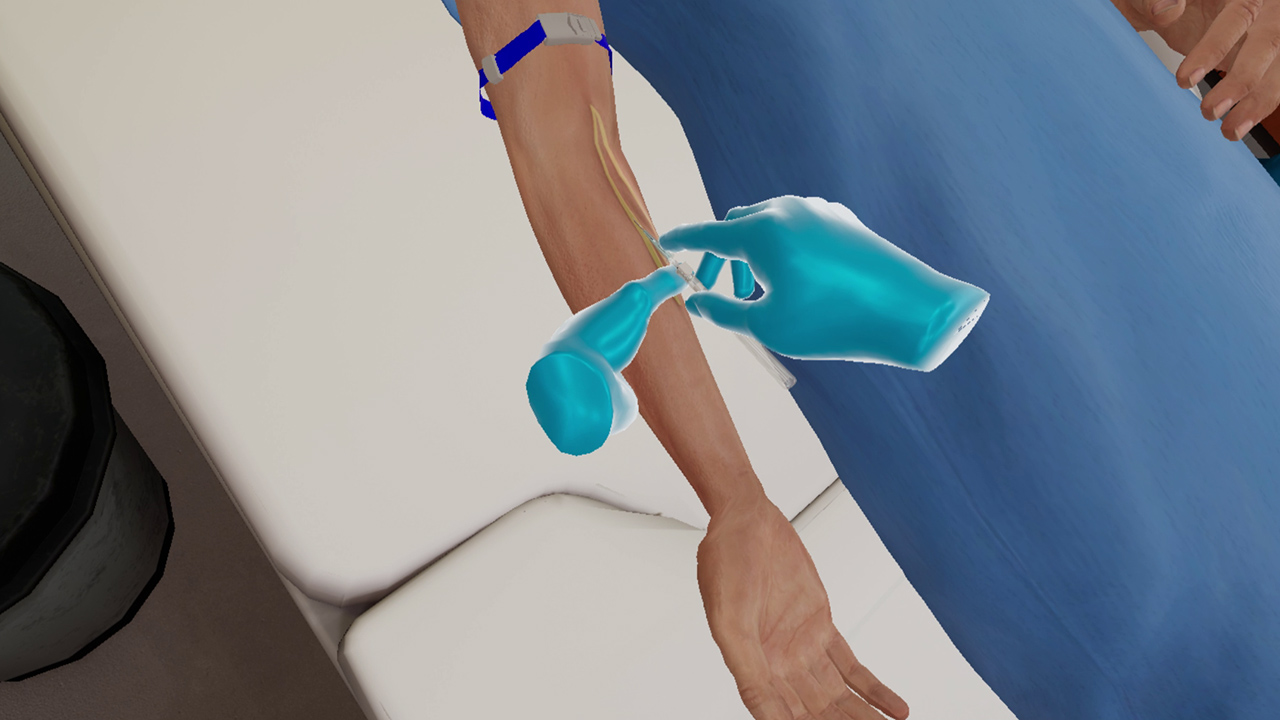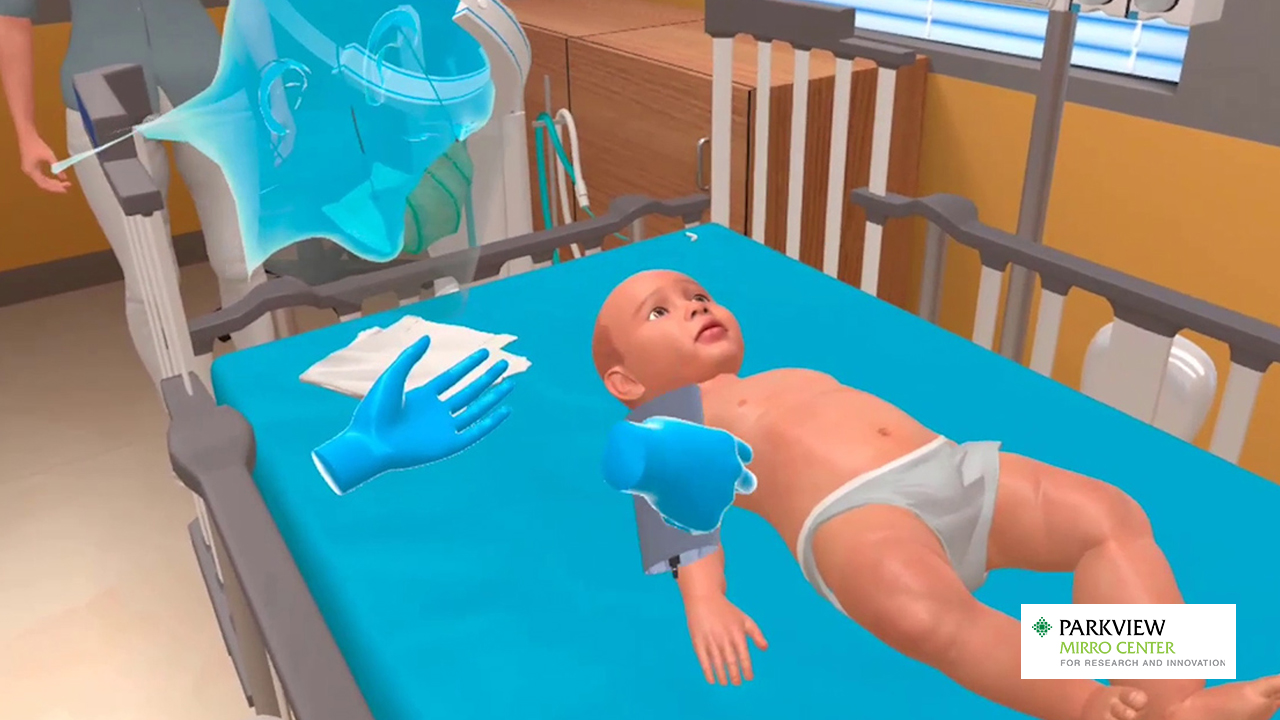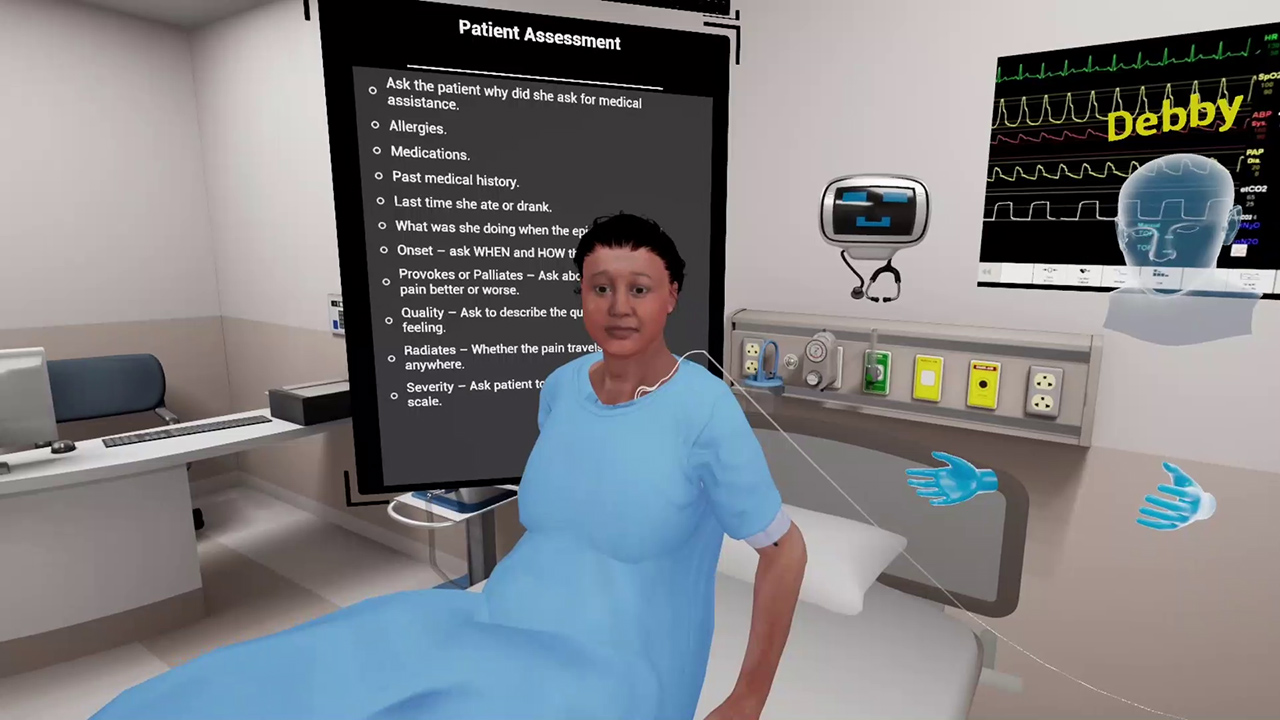
What are medical simulations
Simulations are the reproduction of real-life scenarios and environments to replicate processes and scenarios in controlled environments. When it comes to medical simulations, it involves the recreation of healthcare procedures and scenarios to enable practice and training in safe and stress-free environments.
Significance of medical simulations
The medical and healthcare field is one that requires a great deal of hands-on practice along with the necessary theoretical knowledge. Until not very long time ago, apprenticeship was the means to acquire this practical, hands-on training. It goes without saying, this means had its own set of risks involved – for both patient and learner. On one hand the patient was at risk of a misdiagnosis. The learner, on the other hand, a novice, was exposed to various infectious diseases, had to be part of live surgeries and was supposed to handle live equipment with very limited exposure. With simulation trainings, be it mannikin or virtual reality, these risks are eliminated. Now learning takes place in controlled environments and every possible type of scenario can be recreated to provide thorough practice to learners. Even trained professionals can polish their skills and practice new procedures to upskill.
Simulation training is an experiential process that provides instant feedback and an opportunity for evaluation and reflection on the steps taken during the training session. In a simulation-based training session, learners are not spoon-fed but given the freedom to perform procedures on their own and run a self-evaluation. Since there is no risk involved there is the liberty to make mistakes, analyze what went wrong and why, and learn from those mistakes.
As the Society of Simulation in Healthcare puts it, “Simulation education is a bridge between classroom learning and real-life clinical experience.”
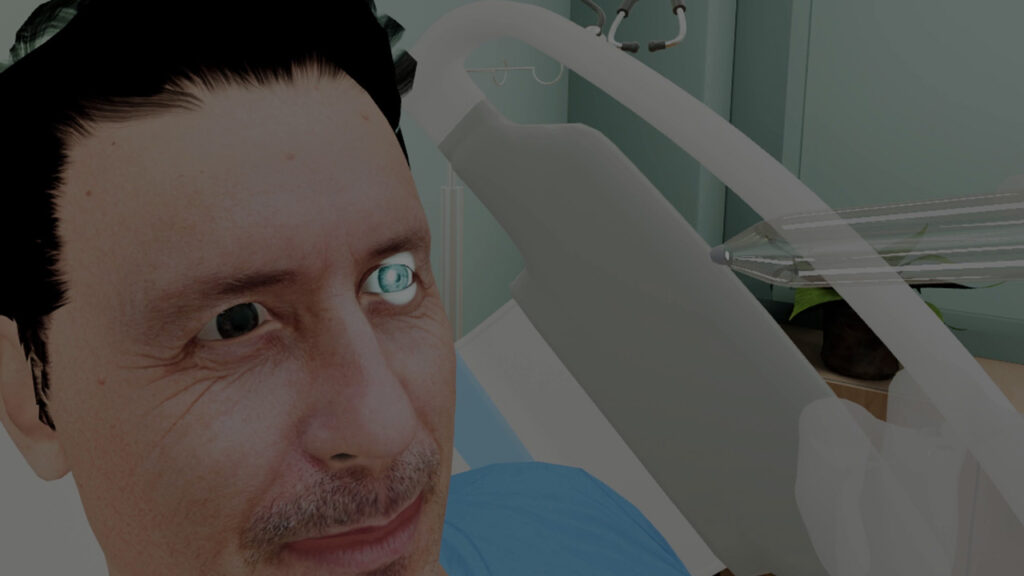
Performing a head-to-toe examination in virtual reality with a virtual patient.
Types of XR medical simulations
Medical simulation training can be both mannikin-based and in extended reality (XR). While mannikin-based simulations carry all the benefits mentioned earlier, XR has a few more to add to the list. Simulations in XR can be repeated innumerable times with no time lag between sessions. No special designated facility needs to be maintained as training requires only a headset or goggles and all solutions are highly scalable, customizable, and cost-effective.
MedVR Education is spearheading its way in creating evidence based XR simulations for healthcare training and has three distinct types of simulations to offer to its learners.
Procedural solutions: As a healthcare professional one is required to perform numerous procedures. These can be basic ones like drawing blood or critical ones like an endotracheal intubation. Successful and efficient completion of procedures relies upon thorough preparation, careful execution, and to some extent, good muscle memory. These are qualities that can be acquired and honed with quality training. XR medical simulations from MedVR Education are designed to provide learners opportunities to develop these very qualities and help achieve excellence in performing medical procedures. Some of the procedural simulations in the current library include skills training for phlebotomy, IV insertion, PICC insertion and removal, NG tube insertion, tracheostomy care, colostomy care and many more in the pipeline.
Open scenarios: These are more or less like open scenario video games where the user is given access to the environment to act as deemed necessary. Being medical scenarios, these are of a more serious nature and learners are required to perform tasks towards a set goal. This could involve diagnosing and treating a sepsis patient or performing the necessary tasks to treat a patient suffering a cardiac arrest. The sessions culminate in a debriefing of the learner’s performance, listing out how the learner fared.
To know more about MedVR Education’s open scenarios, the following link can be helpful.
https://medvr.education/vr-open-scenario-assessments-for-healthcare-training/
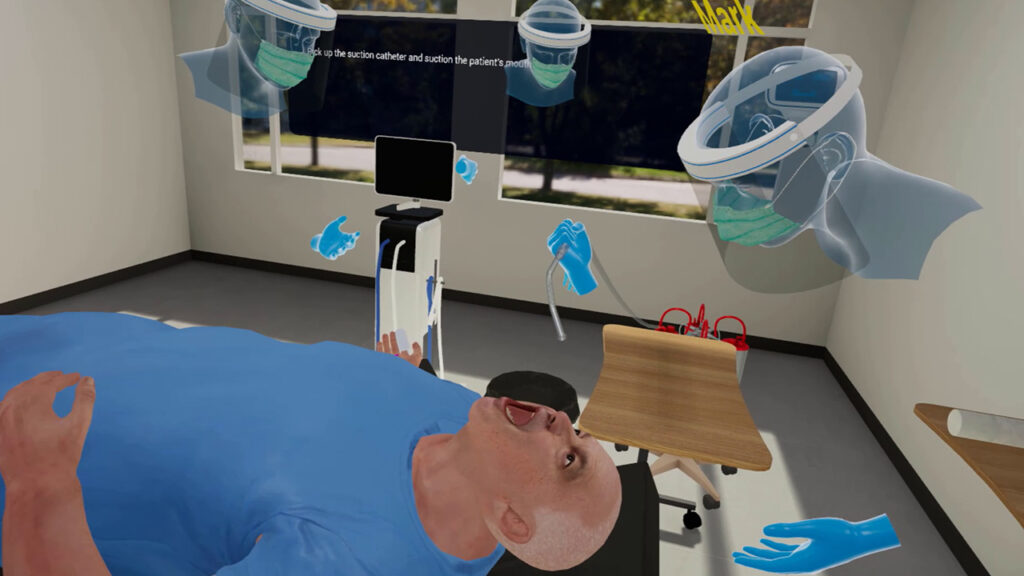
Practicing endotracheal intubation in a risk-free and stress-free but realistic virtual environment.
AI-based training: Proper diagnosis is important to administer correct treatment. This can involve conversing with the patient, asking relevant questions, understanding the patient’s responses, being able to read body language, and drawing appropriate conclusions. The AI based training is designed to help polish these very qualities. The learner can interact with multiple AI-based virtual patient profiles, asks questions regarding their ailments and try to understand the symptoms being narrated. These patients are programmed to respond like real humans with learners, providing learners with true-to-life patient-doctor interaction.
The stakes are always high in the healthcare profession. When working with patients and their wellbeing extreme amount of care and caution is required. Thorough and quality training is one way to achieve this. Medical simulations help learners practice and perform in realistic but controlled environments. This provides them the opportunities to learn, practice, make mistakes, review, and learn further, giving them ample chances to polish and perfect their skills.
Contact us to know more about VR in healthcare training, or visit MedVR Education to explore the various programs we offer.

